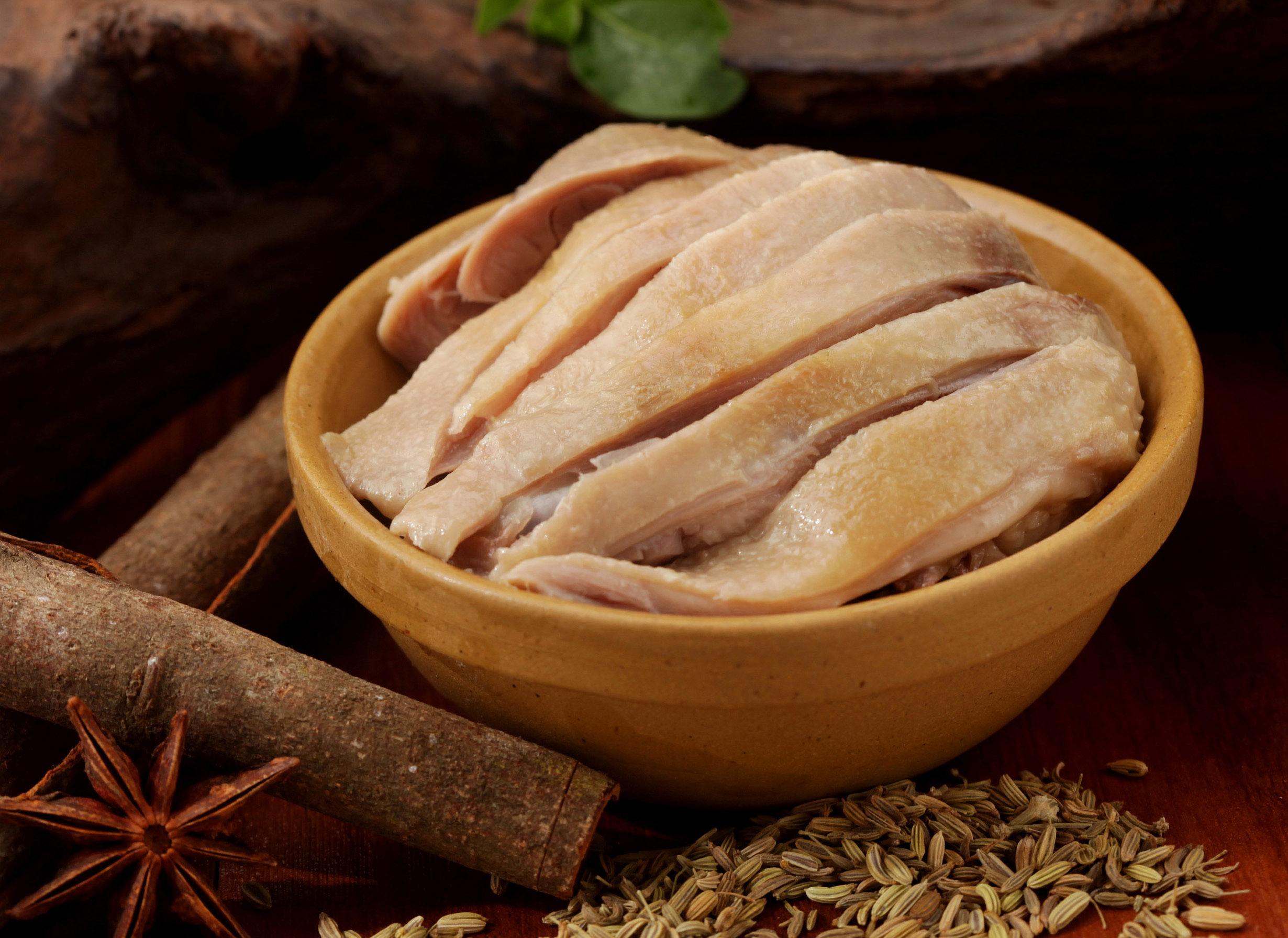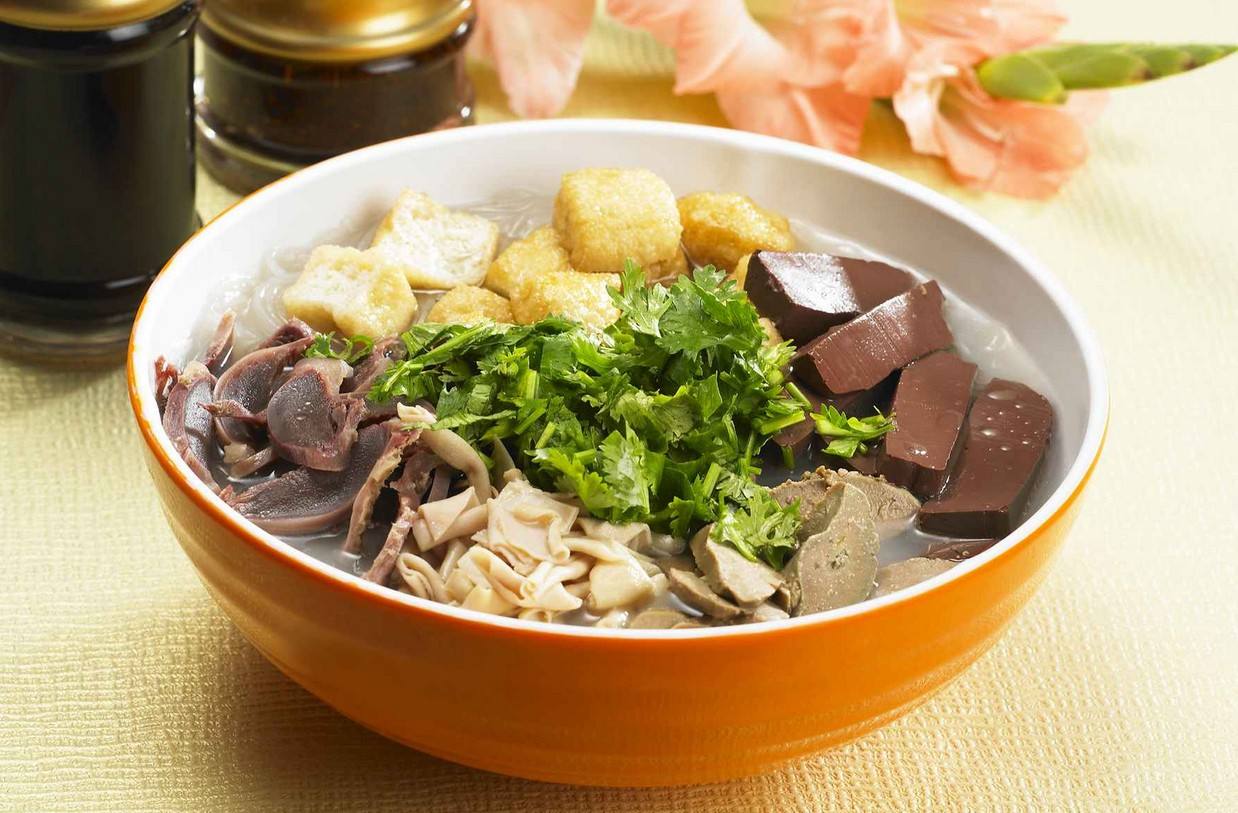Culinary masters get their ducks in a row
From north to south, Peking roast duck, Nanjing salted duck and Cantonese roast duck are three icons on the checklist of classic Chinese cuisine.
Of course, duck transcends boundaries where tastes are concerned. It features in many cuisines, like duck confit and foie gras in France, and Betutu in Bali, Indonesia. Fattier than chicken, duck lends itself to an array of cooking methods.
In Chinese home kitchens, the fowl is turned into stews and soups, like beer duck with the meat braised in beer, soy sauce and spices, or boiled duck soup using more matured ducks to achieve a richer stock.
Nanjing, the capital of duck cuisine
In 2016, the duck industry in the capital of Jiangsu Province said local residents consume over 100 million ducks a year. The news went viral online, with netizens either astonished by the number or skeptical that it was too low.
Of the reported 100 million birds slaughtered, 40 million are turned into salted duck, or yanshuiya, Nanjing’s most famous dish. The perfect Nanjing salted duck dish features tender white meat, a thin layer of fat and crispy skin.
Traditionally, the dish is made with local duck breeds like ma ya, or shelduck, but the long growth cycle and high price of that variety can’t keep up with demand, so other duck species are also used, like Peking duck.
But it’s not quite the same.
Peking duck is looser and fattier, which affects the taste. To make salted duck, a fresh bird is thoroughly rinsed to remove any residue blood.
It is then cured for several hours with chao yan, or stir-fried salt. The inside and outside of the bird are rubbed with the salt, using a ratio of about 45 grams of salt per kilogram of duck. The bird is then marinated in a brine of rich spices for a few hours before being cooked in boiling water infused with ginger, scallions and spices for half an hour.
Once cooled to room temperature, the duck is ready to eat.
The best time to enjoy salted duck is the osmanthus flower season in September and October; hence the dish is also called “osmanthus duck” in Nanjing. It’s a must-have dish when celebrating the Mid-Autumn Festival in the city.

Nanjing salted duck
Nanjing’s love affair with the duck goes back a long way.
The region, crisscrossed by numerous waterways, is an ideal breeding ground for the fowl.
Lu Guangwei, an author in the Tang Dynasty (AD 618-907), wrote in Wu Di Ji (“Book of Wu”) that the region was breeding ducks for food as early as the Spring and Autumn and Warring States periods (770-221 BC).
But 400 years ago, Nanjing’s No. 1 duck delicacy was not the salted duck of today.
Back then, the specialty was ban ya , a pressed and salted preserved version that originated in the Six Dynasties period (AD 222-589) and became popular during the Ming Dynasty
(1368-1644).
There are several kinds of ban ya produced across China. In Nanjing, different recipes are used for winter and summer. The ducks are cleaned, cured in salt and a special brine before being steamed and left to dry in the open air. The preserved duck can be served as a quick dish, by soaking it in warm water for 30 minutes to soften the texture and then steaming the whole duck.
The city has another popular dish: Nanjing roast duck. Unlike other styles of roast duck that emphasize crispy skin and tender meat, the essence of Nanjing roast duck is in the sauce rather than the meat itself.
Ya si jian, or “four parts of the duck,” is a snack that goes well with alcoholic drinks.
The four parts refer to the wings and feet, which can be stewed in brown sauce, salt water or spiced brine.
According to a folk legend of how duck came to trump chicken as a dinner table favorite dates back to the 14th century. It is said that Zhu Yuanzhang (1328-98), first emperor of the Ming Dynasty, was having trouble building a city gate tower, so he borrowed a “treasure basin” from a wealthy businessman named Shen Wansan and buried it at the gate site to pray for good soil.
Zhu told Shen that he was just borrowing the basin and would bring it back at the fifth watch of the night (about 5am). But once buried underground, the basin proved too valuable to return, so Zhu forbade bellmen in Nanjing from ringing the fifth watch and ordered all roosters killed so they wouldn’t crow at that hour. People have been eating duck ever since.
Nothing of a duck is wasted. Duck blood and vermicelli soup, and duck-fat baked rolls are two of the city’s most popular street foods.
Duck gizzards, intestines and livers are also turned into popular dishes.
Salted ducks today are fattier than their predecessors, and the extreme saltiness of old has been reduced by half — perhaps to suit more healthy lifestyles.
In Nanjing, salted duck is a versatile and cheap dish for lunch and dinner. It pairs well with congee in the morning and can be shared with friends and family as a cold appetizer in casual gatherings or at dinner parties.
People in Nanjing love duck so much that they have created salted duck souvenirs, like the popular white and long-necked salted duck plush pillow and pins that can be used as bookmarks or brooches.

Duck blood and vermicelli soup

Duck-fat baked rolls
Snacking on duck
All parts of the duck, from head to feet, from tongue to gizzard, are ingredients used in making favorite Chinese savory snacks.
The less meaty parts of the duck are ideal for braising in spicy stock using Sichuan peppercorns and chilies.
And because eating the duck neck, feet, head and tongue requires more chewing, duck parts make ideal snack while watching TV and or playing computer games.
Packaged ready-to-eat duck snacks are available in shops and online. It’s a big business. Notable brands like Zhou Hei Ya from Wuhan and Jue Wei from Changsha rack up annual revenues in the billions of yuan.

Duck tongues
A variety of breeds
In animal husbandry, ducks are raised for meat and eggs. Native breeds like Gaoyou and Shaoxing ducks have been supplemented by foreign species such as Muscovy and Khaki Campbell ducks.
In Chinese markets, one of the most common products is called the Cherry Valley duck. It’s a white-feathered relative of the Peking duck, which was first domesticated from mallard wild ducks in China and is ideal for Peking roast duck because it’s fatty and meaty.
Cherry Valley Farm in the UK was founded in 1958 by Joseph Nickerson, who managed to improve the quality and profitability of the breed before exporting it back to China in the 1980s.

Peking duck
Duck soup with pickled sour radish
This classic soup in Sichuan cuisine uses matured ducks.
Ingredients:
Half a fresh duck, rinsed thoroughly and chopped into chunks
A packet of duck and pickled sour radish soup mix, which can be bought in supermarkets or online. Making the mixture at home takes at least a month.
Half a white radish, cut in cubes
Bamboo shoots and shitake mushrooms (optional)
Steps:
1. Bring a pot of water to boil and quickly scald the duck to remove excess grease and any residue blood.
2. Place the chunks of duck in a clay pot and pour in enough water to cover. Add the soup mix.
3. Add the white radish cubes, bamboo shoots and shitake mushrooms.
4. Cover the clay pot and bring to a boil. Then turn down the heat and let it simmer for one to two hours.

Duck soup with pickled sour radish
Duck braised in beer
Ingredients:
Four duck legs, chopped in chunks. Though the dish is often made with a half or whole duck, it’s easier to cook the legs, which are also the most flavorful part of the meat.
A can of beer
Scallions, sliced ginger, garlic, dried chili, star anise, salt, sugar, dark and light soy sauce
Steps:
1. Heat the wok and add a few tablespoons of cooking oil. Stir-fry the ginger slices, scallions, garlic, star anise and dried chili until the fragrance emerges.
2. Add the duck meat and stir-fry on high heat until the skin shrinks and the color of the meat turns white. Turn down the heat to low-medium and stir-fry slowly till the fat comes out.
3. Add the dark and light soy sauce, sugar and salt. Mix well and then pour in a can of beer.
4. Cover the wok with lid and let it cook on low to medium heat for 20-30 minutes. When the meat becomes soft and juicy, turn up the heat to reduce the sauce.

Duck braised in beer















